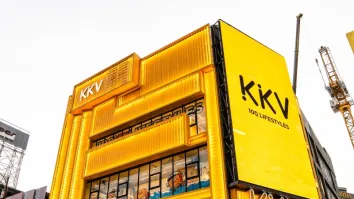
Michael Cheng of PwC: Localisation, digitisation, circular economy are key themes of supply chain innovation
Cheng emphasised the need for retailers to adapt supply chains amidst geopolitical tensions, ensuring resilience.
The retail industry, a cornerstone of economies worldwide, is driven by the evolving behaviours of its primary stakeholders: consumers. From the rise of generative AI to shifting attitudes towards health and sustainability, consumer behaviour is undergoing significant transformations. This landscape of change presents both challenges and opportunities for retailers seeking to navigate the complex terrain of consumer preferences and market dynamics.
Michael Cheng, serving as the Asia Pacific, Mainland China, and Hong Kong Consumer Markets Leader at PwC, brings over three decades of professional assurance experience to his role. With a strong focus on the consumer market sector, he has been instrumental in guiding companies through IPO advisory, due diligence reviews, and M&A activities in Mainland China and Hong Kong.
His leadership extends beyond the board room, as he actively contributes to the industry through memberships in professional bodies and philanthropic endeavours such as his role as a council member and chairman of the Audit Committee for UNICEF Hong Kong.
As a judge in the Retail Asia Awards 2024, Cheng shares his insights into the retail industry's current landscape and future trajectory. From the impact of geopolitical tensions on supply chains to the imperative of integrating ESG considerations into business models, he offers a nuanced perspective on the challenges and opportunities facing retailers today.
With an eye for innovation and customer-centricity, he also provides invaluable recommendations for retailers aiming to thrive in an era of unprecedented change.
In your view, what are the key shifts in consumer behaviour that retailers should closely monitor?
Consumers face transformations in their consumption patterns and habits, from the rise of generative AI to changing attitudes towards health, wellness, and sustainability. It is also clear that personal finance now plays a bigger role in influencing consumer decisions and in the likelihood of people engaging in rational, cost-saving shopping behaviours.
For more essential items or services, Asia Pacific consumers are getting smarter about what and where they buy. They are very creative at finding the cheapest way to buy the brand they want, whether it’s through WeChat groups or the latest live streaming deal. Without compromising on the brand and product they desire, they are making more rigorous trade-off decisions and are more actively seeking discounts and promotions.
A trend that has been cementing is the financial uncertainty pinch Chinese consumers continue to feel, underscored by a less-than-optimistic job prospect. They have been tightening their belts to rebalance spending across different categories and as a result, a majority of surveyed consumers plan to adopt some form of cost-saving behaviour. Cheaper shopping alternatives have thus been increasingly popular in China, such as membership stores and group buying platforms.
Another notable trend is the increasing scepticism of recommendations and a preference for doing independent research. With the abundance of information available online, consumers are more likely to seek out reviews and feedback from other customers, as well as compare prices and features across different products and brands.
Given your emphasis on supply chain innovation, how do you foresee retailers adapting their strategies to address evolving challenges in the coming year?
Geopolitical tensions will continue to exert pressure on the industrial supply chain, affecting prices and availability, prompting retailers to seek opportunities to diversify their sourcing and establish resilient supply chains that can adapt to changing market conditions and meet consumer demands.
The ability to address supply chain pain points will form a new source of competitiveness for retailers as they start to realise the importance of localising or shortening their supply chains to reduce the risk of logistical or transportation disruptions. Product shortages and higher prices are forcing businesses to pivot and provide new solutions for customers to access products and services. In this context, supply chain innovations will be key to addressing the challenges ahead.
Localisation, end-to-end digitisation, and circular economy will become major themes for supply chain innovation. In particular, the source-local trend continues to gain traction as manufacturers seek to consolidate their upstream supply chains whilst investors bargain hunt on undervalued companies. On the other hand, advanced AI and natural language models present the potential to optimise supply chain management for retailers.
By using machine learning algorithms to analyse data from multiple sources, such as sales data, customer behaviour, and external factors like weather and seasonality, generative AI can identify patterns and make predictions about future demand for a particular product, as well as identify slow-moving products or those that are likely to expire soon, thereby reducing the likelihood of excess inventory and stockouts.
With the growing importance of ESG sustainability, how can retailers effectively integrate environmental and social considerations into their business models?
Consumers are increasingly paying attention to sustainable consumption. To better execute their ESG strategies, retailers can engage with suppliers that adhere to strict ESG standards. By selecting suppliers that prioritise sustainability and ethical considerations, these companies can better meet customer requirements, enhance brand reputation, and gain a competitive edge in the Chinese market. Therefore, it is increasingly crucial for companies to prioritise ESG factors in their business operations and supply chain management to remain competitive and ensure long-term growth and success.
Brands are actively responding to consumers by embracing circularity in their supply chains and recognising the value of sustainability. Rather than viewing sustainability as a mere "compliance" requirement, brands are now leveraging it as a differentiating factor that adds value to their products and services.
This shift in mindset has sparked innovative collaborations and transformative changes in how brands approach sustainability as a “value-adding” differentiator, and how they develop sustainable DTC engagement along the customer journey to enhance interaction.
Circular model innovation is gaining traction in the luxury industry, with major brands making investments in the second-hand luxury rental and resale segments through C2C or B2B2C platforms. Three emerging themes - young generation, gamification, and sincerity - have become essential for ESG promotion and consumer education. Younger generations represent an ideal target consumer group for ESG promotion and sustainable consumption due to their strong preference for products that embody meaningful ESG values.
Gamification is another effective approach to interact and engage with consumers by leveraging AI-powered technology to create customised experiences with a social impact. Sincerity can be approached in various ways, such as by reducing shopping waste and enhancing consumer experiences through AI, AR, VR, and even the metaverse.
Are there specific technologies or innovations that you believe retailers should prioritise to stay ahead in the ever-evolving digital retail space?
ChatGPT, along with other variations of generative AI, has taken the world by storm and revolutionised many industries due to its advanced conversational capabilities. The application of advanced chatbot technology is ever-increasing for the consumer market. There are numerous ways brands can harness the power of generative AI. For example, AIGC-powered systems have the potential to revolutionise customer service, which until now, has been a pain point for B2C brands trying to improve service quality and reduce costs in their external communication channels. The wide applications of AIGC not only allow retailers to streamline high-frequency repetitive tasks for better cost control, but also enable innovative use cases in private domain operations such as virtual KOC live streaming, create personalised content and product recommendations, enhance customer responsiveness through intelligent chatbots, or perform sentiment analysis to better handle customer complaints.
Interactivity is perhaps one of the most imaginative aspects of AIGC technology. Combined with AI intelligent text, audio, and imaging technology, AIGC makes it possible to create real-time interaction between characters in the video and users, and even the creative use of virtual KOCs to sell products via live streaming.
On the other hand, the Metaverse wave has permeated China and leading tech giants such as ByteDance, Tencent, and Baidu are experimenting with metaverse-style applications, trademarking metaverse-related terms, and investing in the VR/AR industry.
One of our studies indicates that, for many Chinese consumers, metaverse-related activities are still in the experimentative or early adoption phase, although they are found to be more aware of and actively engaged in the Metaverse, compared to their global counterparts. Meanwhile, luxury brands have been at the forefront of shaping the future of the fashion industry. These brands are exploring the potential of the metaverse to create novel revenue streams and offer immersive customer experiences.
Considering recent global economic challenges, how do you envision these challenges impacting the retail sector in the Asia Pacific region? What strategies do you recommend for retailers to not only recover but thrive in the post-recovery phase?
45% of CEOs questioned by PwC’s 27th Annual Global CEO Survey said they expect the global economy to weaken in 2024. It is already weighing on the expenditure on non-essential items, considering the current economic climate. On the other hand, competition is becoming more intense because of the eagerness of Chinese consumers to resume their pre-pandemic routines, including in-store shopping and travel. It revolves around brands’ ability to deliver a superior customer experience and manage various points of friction along the purchase journey, both online and offline.
The recovery of tourist and cultural activities also presents a major opportunity for the tourism, hospitality, and retail sectors. Retailers can leverage this trend by developing targeted marketing campaigns and offering attractive discounts and promotions to entice customers to purchase travel-related products and services. Additionally, they can focus on enhancing their online presence and e-commerce capabilities to cater to the growing number of consumers who prefer to book travel, cultural performances, and purchase related products online.
Retailers can also take bolder steps to rejuvenate and build their business models for sustainable growth in the ever-changing competitive landscape. They can carve out new paths for achieving sustainable growth and success by unlocking the power of brand story-telling and transcending non-price attributes across borders. Successful approaches may include reducing the price-experience gap to foster brand loyalty and create a path of least resistance that deals with various frictions whilst balancing cost and benefits beyond technology hype.
As a returning judge, you've had the opportunity to assess and recognise innovative initiatives in the retail industry. What specific expectations do you have for this year's entries, and are there particular criteria you will be looking for in the submissions?
As a returning judge for the Retail Asia Awards, I have high expectations for this year's entries. I will be looking for innovative initiatives that prioritise customer-centricity, demonstrate business impact, and showcase sustainability (ESG). Successful submissions should also highlight adaptability, scalability, and replicability, along with effective collaboration and partnerships. I am excited to evaluate the entries and recognise outstanding initiatives that shape the future of the retail industry.



















 Advertise
Advertise





